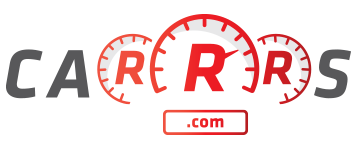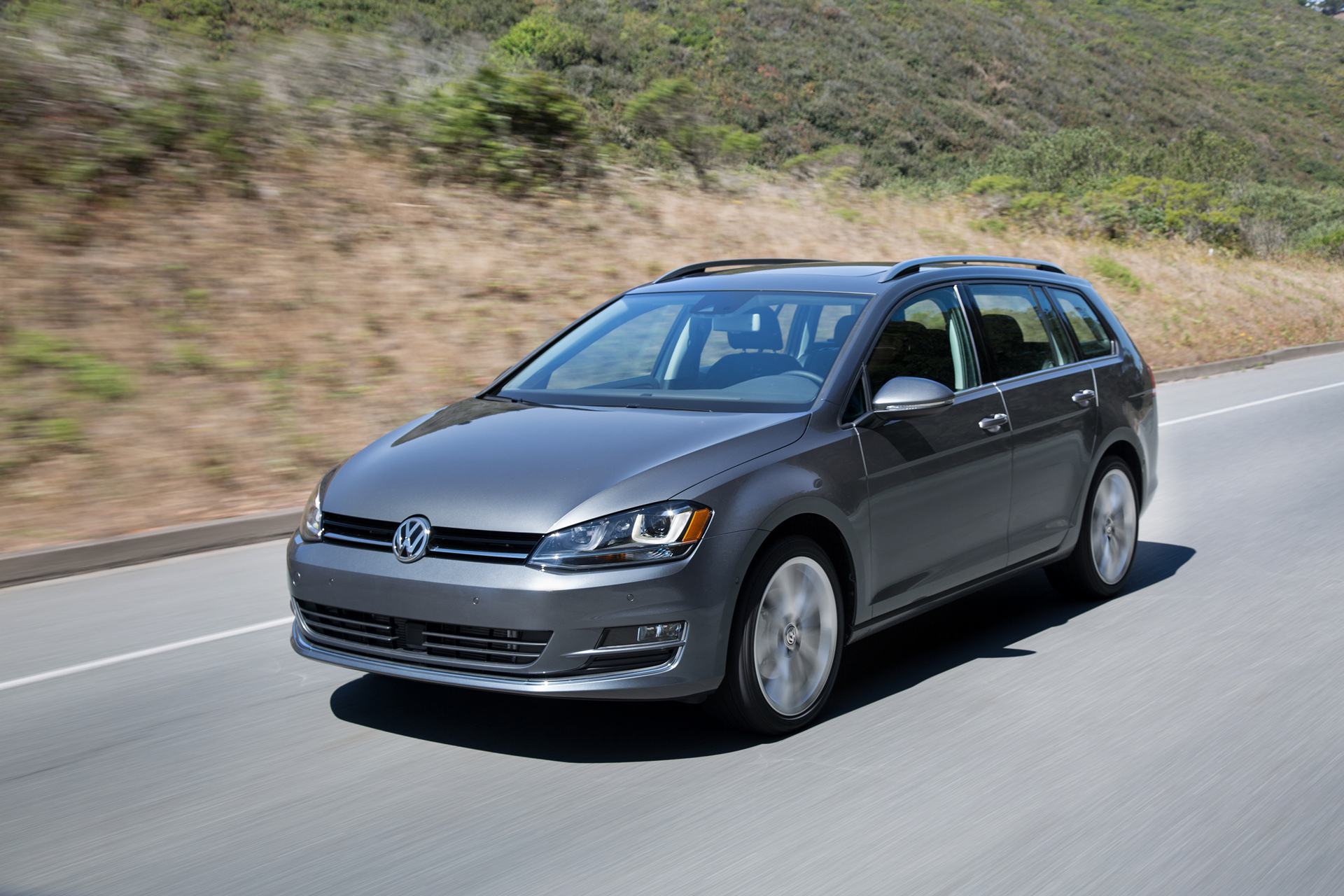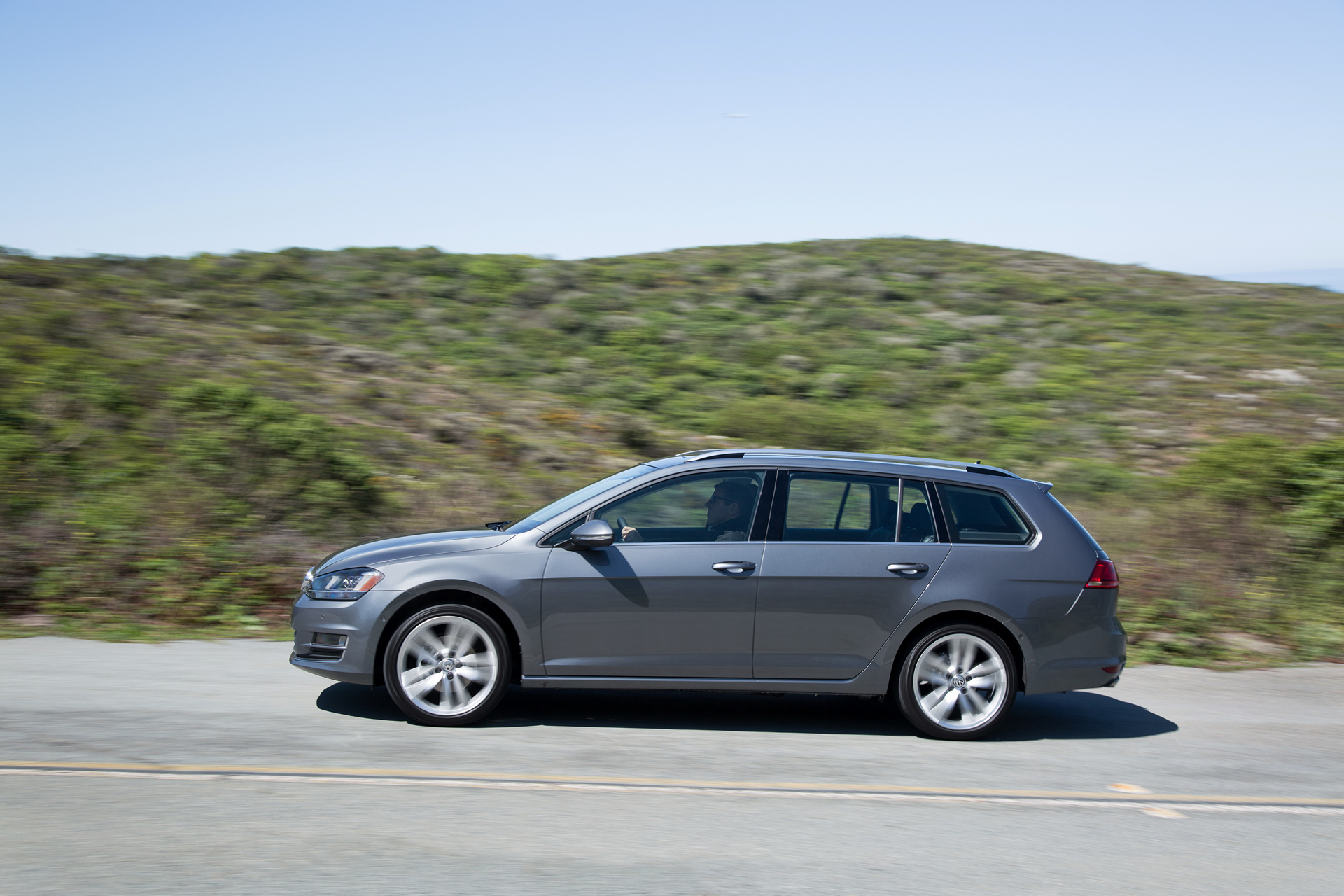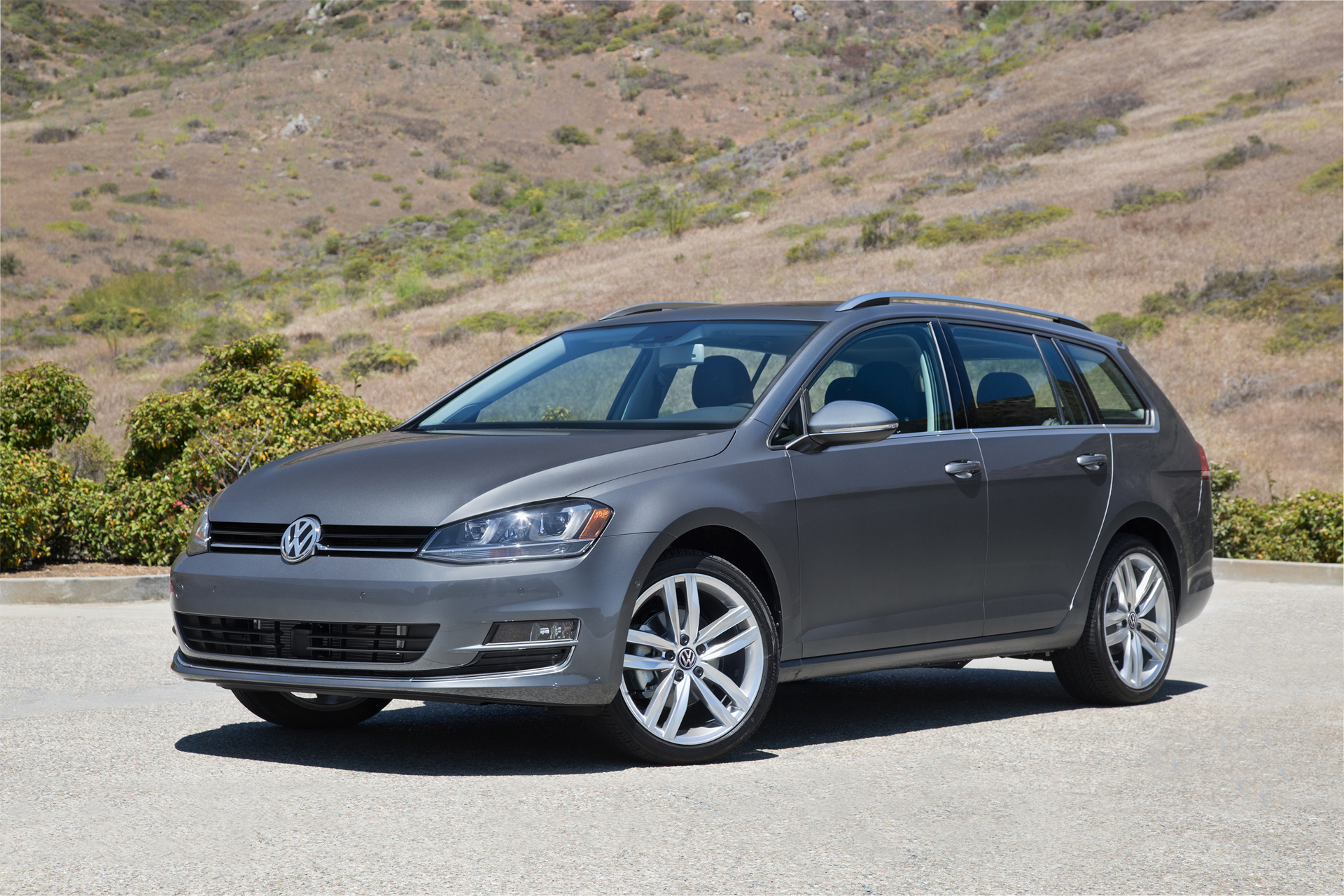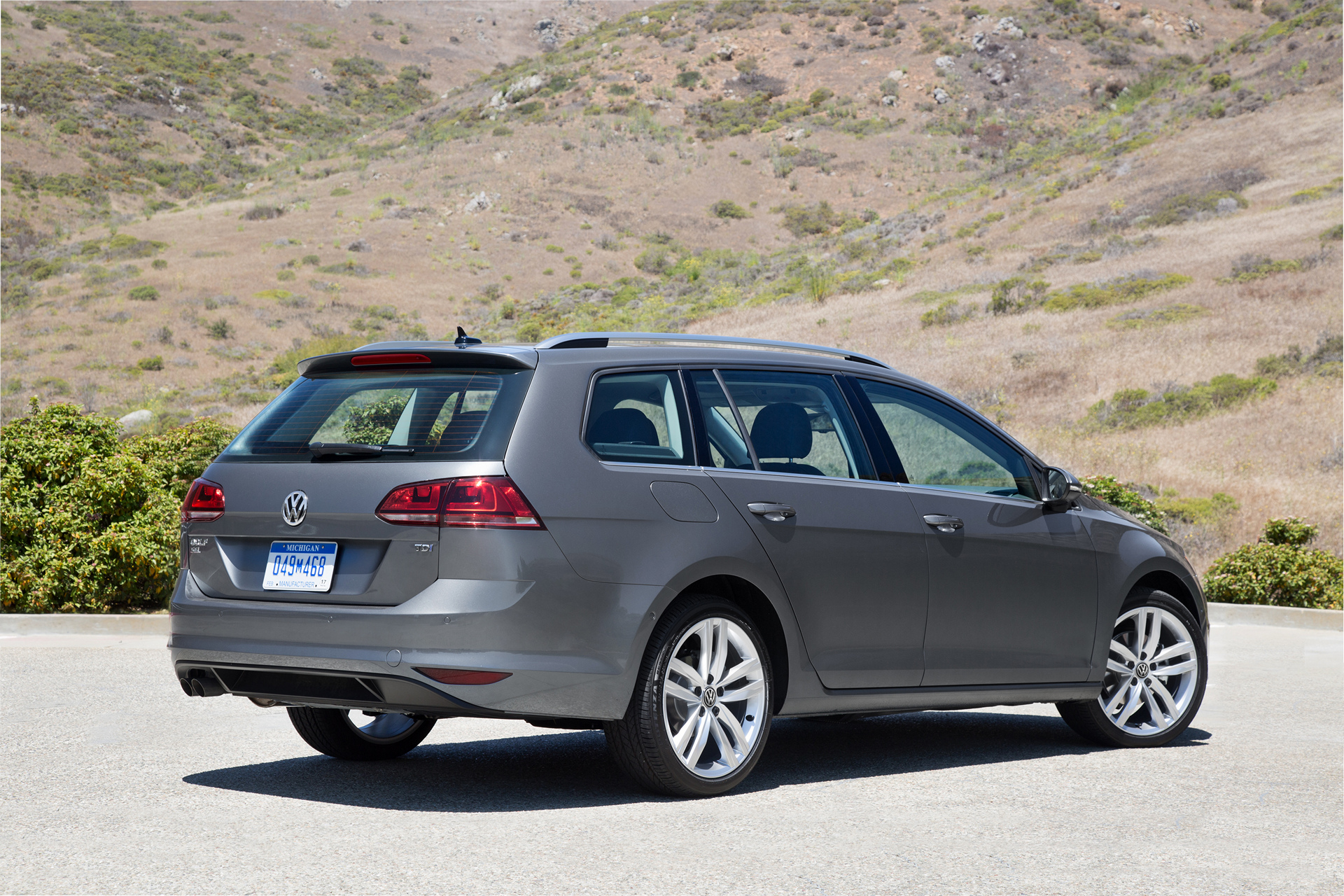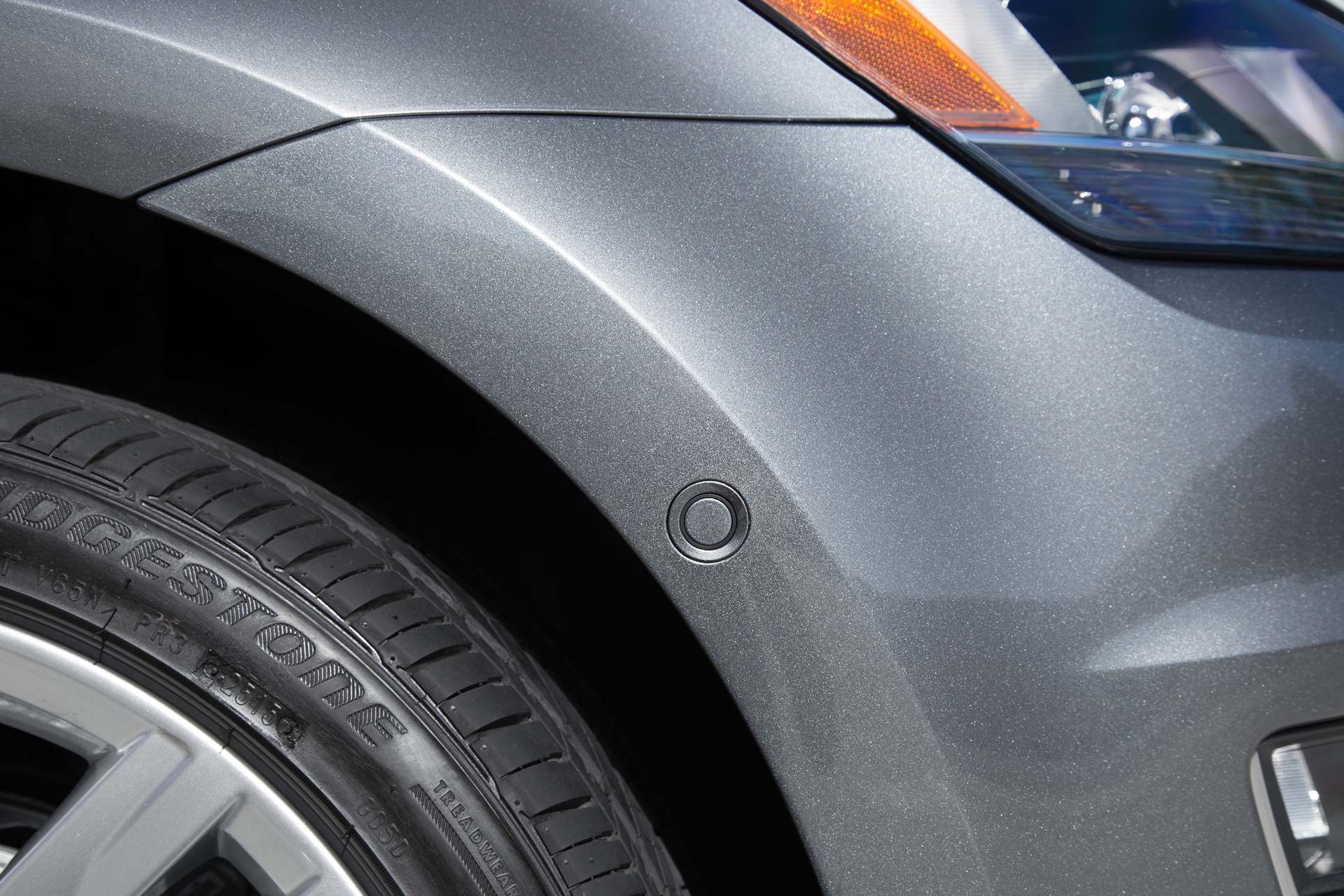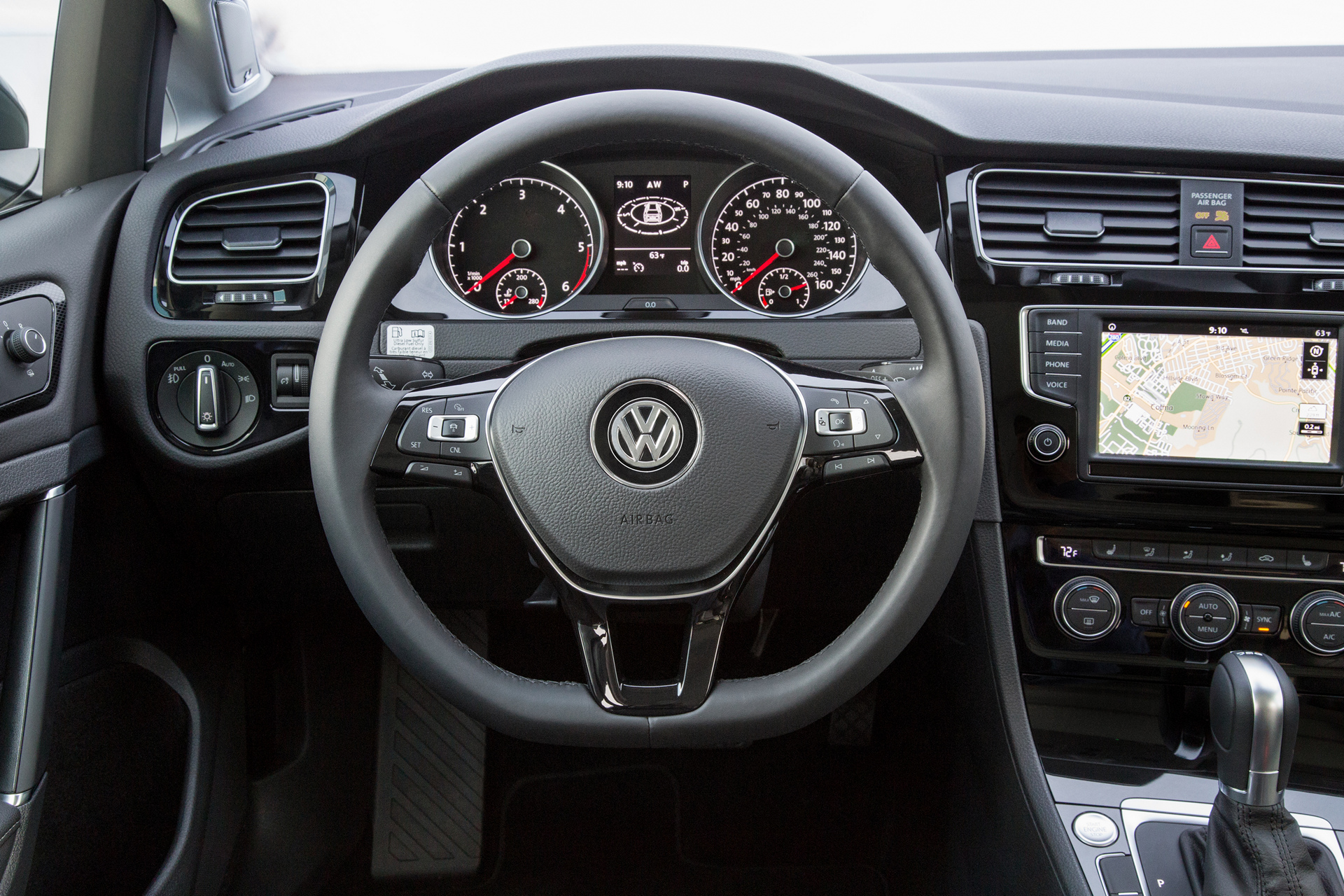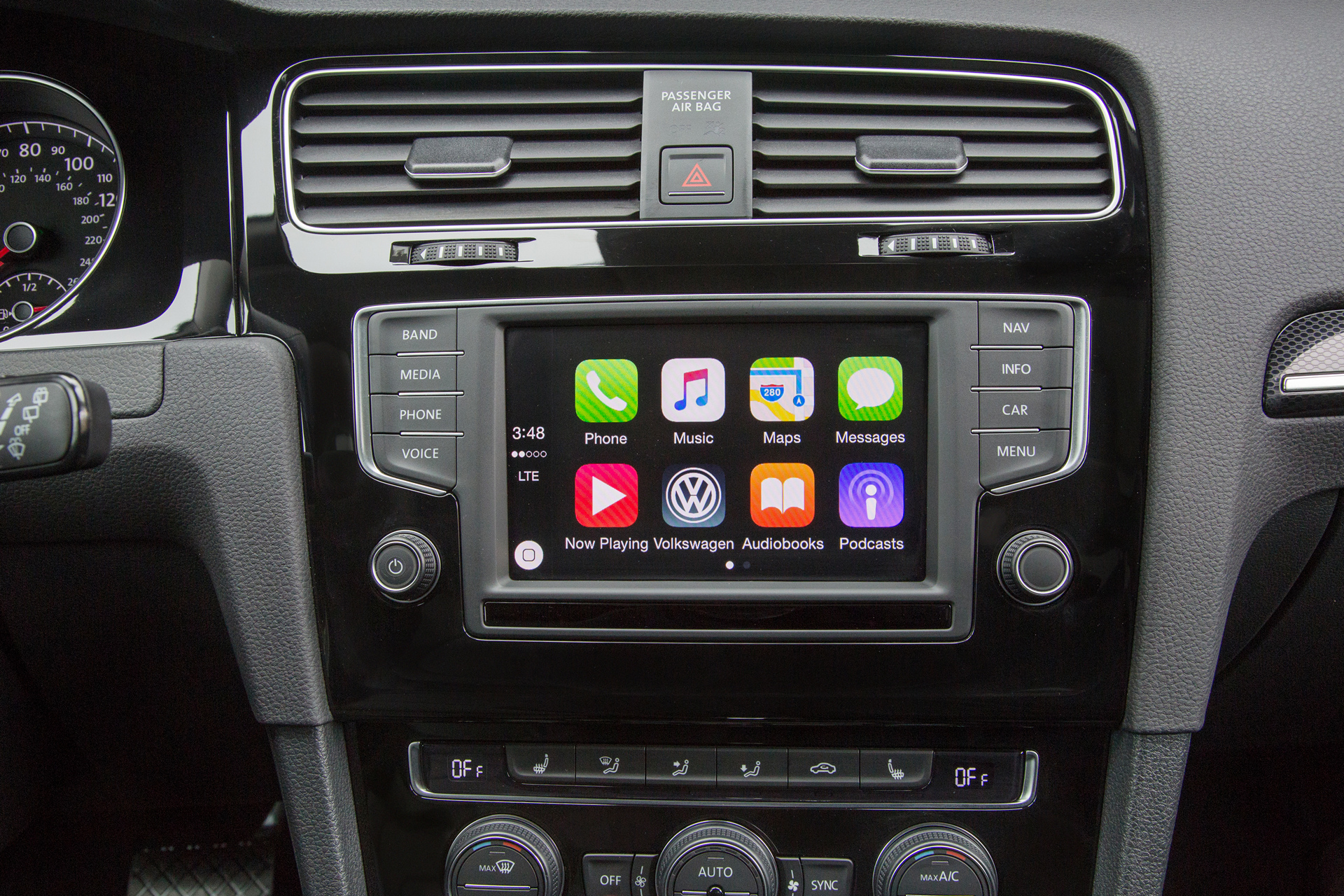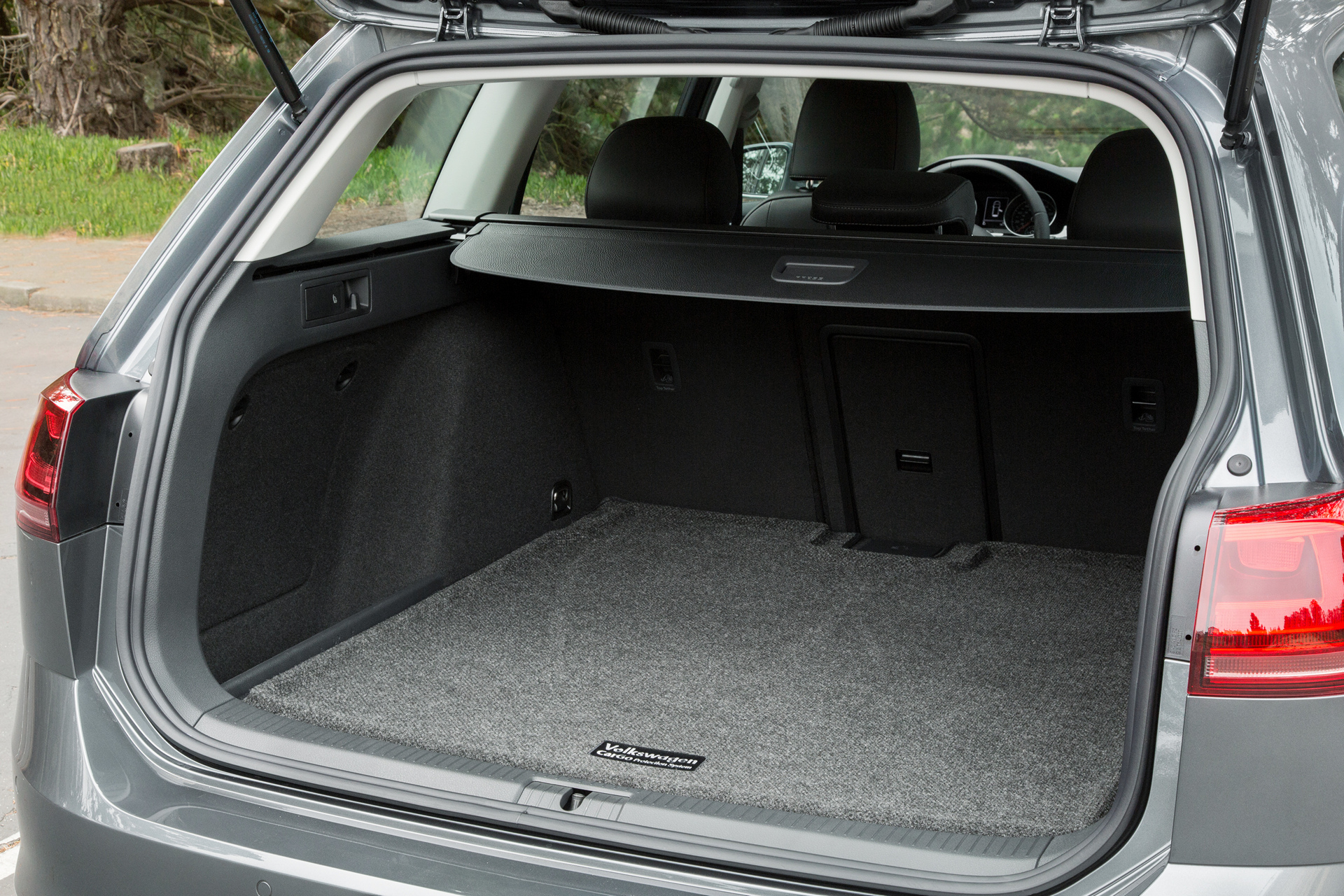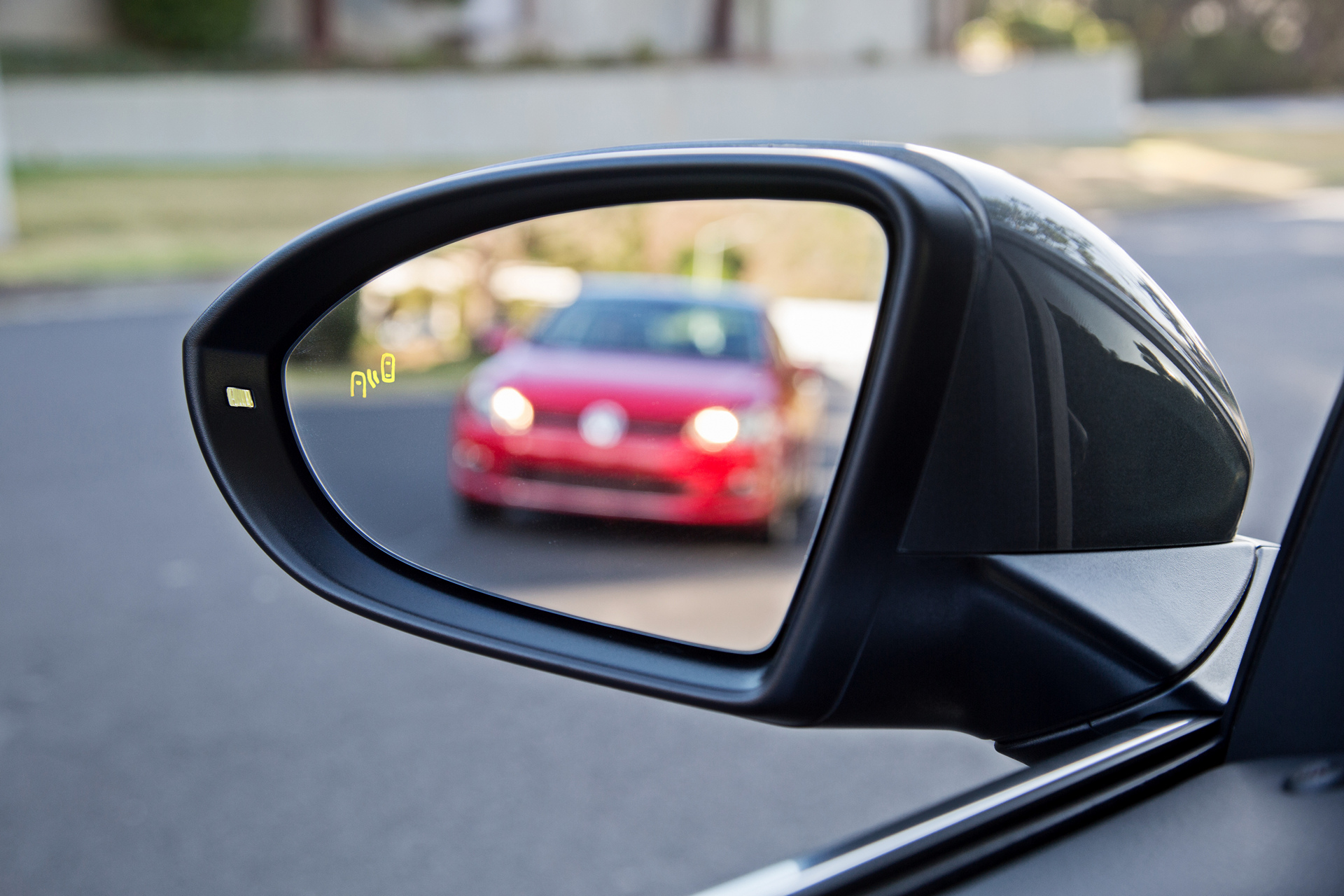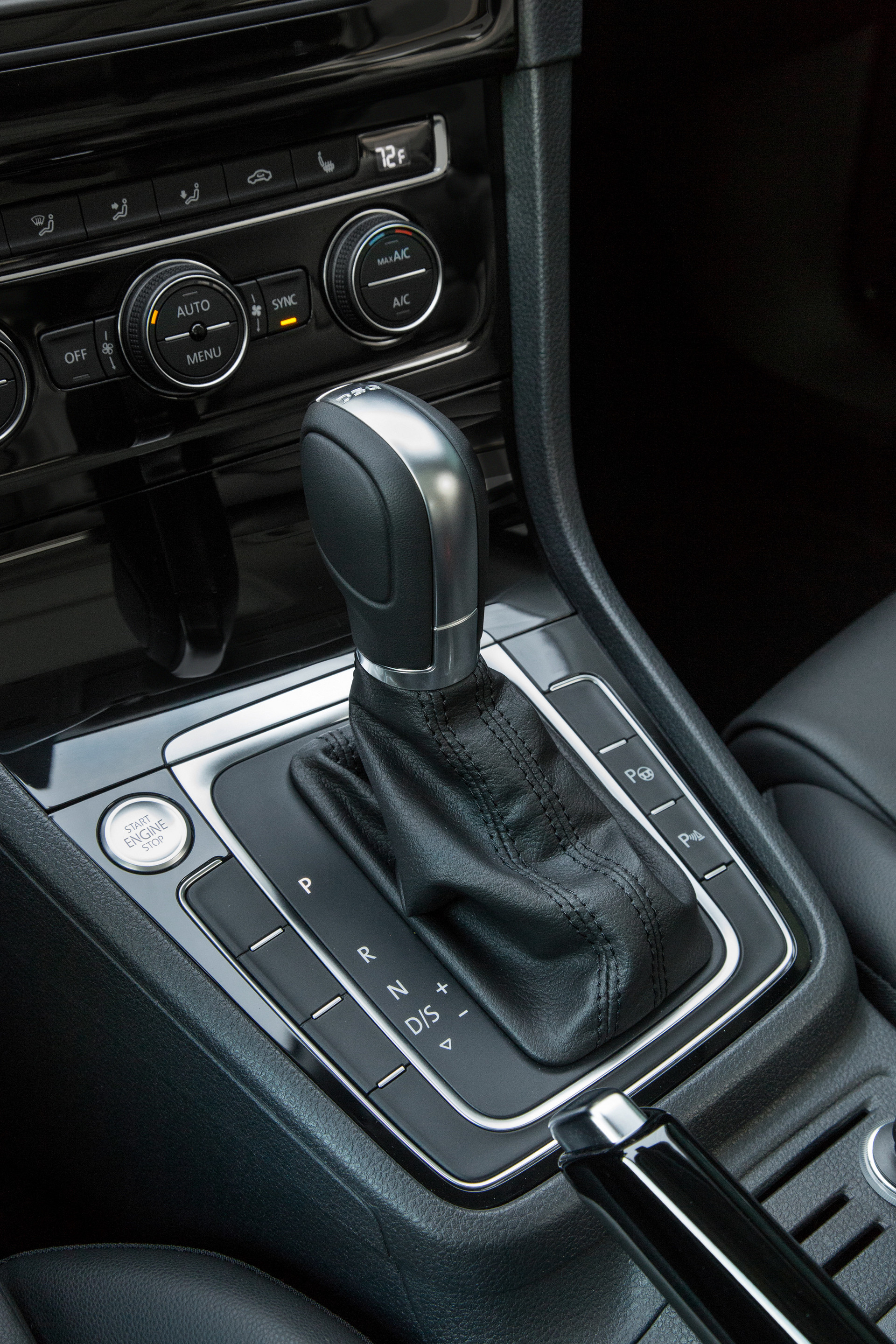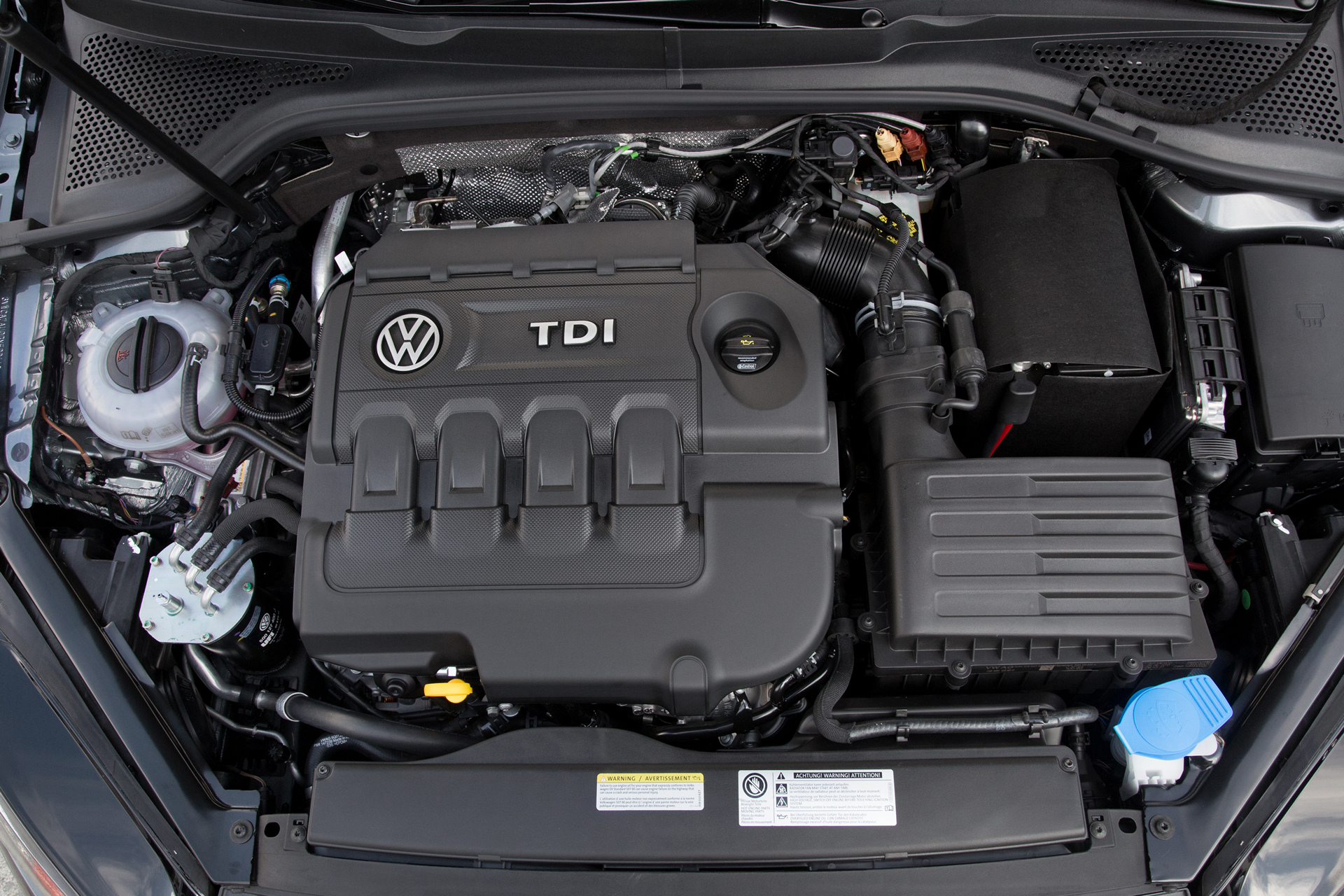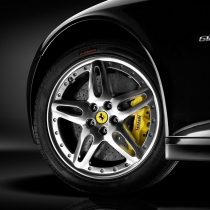The popular SportWagen model joined the Golf family in 2015, shedding its Jetta nameplate to reflect its seventh-generation Golf underpinnings. Volkswagen SportWagen models have long been a top choice for customers who want a versatile and dependable vehicle that provides a sportier driving experience than compact SUVs.
New for 2016
After a ground-up redesign for 2015, the Golf SportWagen continues to add value for model year 2016. The addition of a new infotainment system for 2016 provides a comprehensive suite of connectivity features. Volkswagen Group of America is one of the first in the industry to support all three available connected car systems: Apple CarPlay®, Android Auto™ and MirrorLink®. The new MIB II system offers USB and VW-Car Net® App-Connect, allowing owners with these systems to access select apps from their smartphones directly through the vehicle’s head unit. VW Car-Net’s connected vehicle services umbrella also includes connected car services, advanced telematics, and enhanced navigation available by subscription.
A rearview camera now comes standard all models. The Driver Assistance Package (available on SE and SEL models) has been updated to include a number of new technologies, including Adaptive Cruise Control (ACC), Forward Collision Warning and Autonomous Emergency Braking (Front Assist), Lane Departure Warning (Lane Assist), Blind Spot Monitor with Rear Traffic Alert, and Parking Steering Assistant (Park Assist).
Exterior
The Golf SportWagen is wrapped in sheetmetal that is totally modern yet unmistakably part of the Volkswagen Golf DNA. The shape and design elements remain as defined and recognizable as ever, although distinctive elements such as the D-pillar, the roof rails and the unique rear design differentiate the SportWagen from the Golf hatchback.
The front end features a hood that slopes down into the front fenders and sports angular horizontal design cues and a slender radiator grille. At the back, the wide rear window, geometric two-part taillights and a wide, low tailgate that integrates the license plate area pay homage to the previous Jetta SportWagen and solidify the car’s place in the Golf family. With a load height of just 24.8 inches and a wide aperture of 40.6 inches, the Golf SportWagen is even more practical than its predecessor.
At 179.6 inches long and 70.8 inches wide, the Golf SportWagen is larger than the previous Jetta SportWagen, although overall vehicle height was reduced. These changes help improve the aerodynamics and thus the fuel efficiency, while giving the car really sporty proportions. Thanks to the MQB architecture, which dictates a fixed relationship between the front-wheel centerline and the pedalbox, the front wheels sit 1.7 inches further forward, giving a premium “cab backward” aesthetic. Along with the styling, these updated proportions help the SportWagen achieve a lower visual center of gravity and a more dynamic stance.
The SportWagen TSI® S model is equipped with 15-inch aluminum-alloy wheels. The SE trimline has 17-inch wheels, while the topline SEL trim has 18-inch alloys. A panoramic sunroof is standard equipment on all trim models except the S and the SEL has silver roof rails to set it apart from its S and SE brethren.
In addition to the foglights that are fitted on the SE and SEL models, a standalone lighting package is also available for these trims. This package consists of Bi-Xenon headlights and LED Daytime Running Lights, as well as the Volkswagen Adaptive Front-lighting System. This system swivels the main headlight beams by up to 15 degrees as the steering wheel is turned to illuminate bends in the road more effectively at speeds of more than 6 mph.
Interior
The upscale environment of the SportWagen cabin is largely shared with the Golf models upon which it is based, but interior volume is increased because of the wagon bodystyle. Occupants are treated to 94.3 cu ft of passenger area volume.
Rear-seat leg- and shoulder room are excellent, at 35.6 and 53.9 inches, respectively. Front seat passengers also benefit from the spacious SportWagen interior, with 41.2 inches of legroom and 55.9 inches across the shoulders. Both front and rear headroom are 38.6 inches.
The SportWagen has a cavernous trunk that’s in line with those of compact SUVs. With the rear seats up, the SportWagen boasts 30.4 cu ft of space: when the 60:40 split rear seat is fully folded, that figure rises to an enormous 66.5 cu ft of storage. The split folding rear seats are accessed by release levers in the cargo area, maximizing convenience.
In addition to the expansive interior space, the driver controls are positioned for optimal ergonomics and usability. The seat position, height of the shifter and the spacing between the pedals are fine-tuned for driver comfort. This new driver-centric design focus is evident from the center stack, which is angled towards the driver, a feature frequently seen in premium luxury or performance vehicles. White backlighting for the controls further highlights this upscale ambience, as well as the use of premium materials throughout, such as the leather-wrapped handbrake, shifter knob and steering wheel, the soft-touch plastics and piano-black trim.
An equal amount of attention has been paid to maximizing comfort and convenience, even on the entry-level S trim. This base model comes well equipped with a long list of modern comfort, convenience and entertainment features, including power windows, locks and mirrors, a multifunction steering wheel, rearview camera, Bluetooth® technology and VW Car-Net connected vehicle services.
KESSY® Keyless entry with push-button start is standard equipment on SE and SEL trim levels. The highly acclaimed Fender® Premium Audio System is standard on all SE and SEL trims. The top-of-the-line SEL variants come loaded with the navigation system, Climatronic® automatic dual-zone climate control, ambient lighting with LED interior reading lights, and front comfort sport seats that include a 12-way power driver’s seat.
One of the most significant advances in the 2016 Golf comes in the form of its new MIB II touchscreen infotainment system with USB and VW Car-Net App-Connect, standard on all models. The all-new infotainment system not only creates the foundation for the next generation of Volkswagen’s Car-Net connected vehicle services platform, but also offers one of the most comprehensive suites of connected vehicle services and features available in the automotive industry today. Features available through the new Car-Net are divided into three key areas, “App-Connect,” “Security & Service,” and “Guide & Inform.”
App-Connect. The Composition Media unit is available on the S and SE models. Featuring an 800×480 capacitive color touch display with proximity sensor, with a 6.5-inch screen, standard features include AUX-in, SD card slots, and a USB multimedia interface with Apple iPhone® and iPod® compatibility, reverse camera display, and Bluetooth technology with the ability to send and receive SMS text messages with compatible phones, sync two phones simultaneously, App-Connect smartphone integration, two SD card slots, and a JPEG viewer, SiriusXM® Satellite Radio, HD Radio and support for lossless audio file format (Free Lossless Audio Codec FLAC).
SEL models feature the Discover Media unit, which captures the features available in the previous two units and adds 2.5D Navigation, one-shot voice destination entry, predicts possible destinations based on often used routes, and Destination Entry with Quick Search and Auto-complete, and Car-Net Guide & Inform.
Security & Service. Consumers have the ability to access the Car-Net Security & Service suite through the innovative online Customer Web Portal as well as an advanced app for smartphones, providing access to all the features available from virtually anywhere your mobile device is connected to wireless internet.
Available security related features include Automatic Crash Notification, which automatically notifies an operator who can quickly contact first responders in the event of an collision; Manual Emergency Call, a feature that allows for quick access to customer specialists at the touch of a button; Roadside Assistance, for added peace-of-mind in the event of trouble on the road; and Stolen Vehicle Location Assistance, which uses Car-Net Security & Service to assist law enforcement with locating your vehicle in the event that it is stolen.
In addition, VW Car-Net Security & Service offers other new features for 2016 model year including new layers of convenience such as remote vehicle access, remote door lock and unlock, remote honk and flash (of lights), last parked location information, and remote status check (doors and windows). Consumers will also be able to send a location from their connected smart device to the factory-installed compatible navigation system on select models. For consumers that prefer a more personal touch, agent destination assist is also available.
The Car-Net Security & Service also offers Family Guardian, a suite of features that help families. Features including speed alert, which notifies the owner of the vehicle when the pre-determined maximum speed limit is exceeded; and boundary alert, which lets you know when the vehicle has traveled outside of a pre-set virtual boundary.
Diagnostics and maintenance information is also available through Car-Net. A Vehicle Health Report allows Volkswagen customers to quickly check to see if their vehicle is in proper running order. When it’s time for scheduled service, Car-Net Security & Service not only notifies the customer, but provides a simple way to schedule a dealer visit. It can even identify the closest dealer in case you need a recommendation.
Available later this year, the VW Car-Net app for Apple Watch will allow VW customers to control a host of features and functions available through the iPhone app and Customer Web Portal, directly from their wrist. Apple Watch wearers can keep an eye on their vehicle from afar, remotely locking and unlocking doors and viewing the status of doors, windows and sunroof (open or closed). Consumers will also be able to find a parked vehicle quickly, with a map of the current vehicle location, walking or driving directions to the vehicle, and the ability to honk the horn and flash the lights remotely. Drivers will be able to check their fuel level from the Apple Watch as well. As with the Car-Net app for iPhone, Apple Watch wearers will also be able to receive alerts directly to their Apple Watch from the app.
Guide & Inform. Car-Net Guide & Inform offers an enhanced navigation and infotainment experience for VW consumers. Volkswagen has incorporated technologies that enhance existing navigation offerings while adding an additional level of information that empowers consumers.
Satellite navigation is refined with Car-Net Guide & Inform, incorporating several layers of information right onto the screen. MIB II-equipped Volkswagen models with in-vehicle navigation systems will now feature real-time fuel prices, sports scores, movie information and weather data as part of the three month SiriusXM Travel Link trial. VW customers will also enjoy real-time traffic information and a complimentary four-year SiriusXM Traffic trial.
Customers purchasing new Volkswagen models equipped with VW Car-Net connected vehicle services (not including App-Connect) will receive a no-charge trial for six months after purchase. To extend the benefits of this connectivity system, customers can choose from a number of VW Car-Net payment options: 1 year, for $199; 2 years for $378; 3 years for $540; or, month-to-month, for $17.99. App-Connect can be used free-of-charge and is not included as part of the subscription-based services.
Powertrains
Like the rest of the seventh-generation Golf family, the Golf SportWagen features compact turbocharged and direct-injection engines throughout the entire trim range. The TSI gasoline unit is a member of the latest EA888 engine family and this 170 horsepower 1.8-liter turbocharged and direct-injection four-cylinder TSI engine is mated to either a five-speed manual or a six-speed automatic transmission. When equipped with the six-speed automatic transmission, the Golf SportWagen’s EPA estimated highway fuel economy is 35 mpg. The EPA rating for the manual transmission model is 36 mpg on the highway.
Chassis
The Golf SportWagen shares the same MQB chassis architecture as the rest of the Mark 7 Golf line. The unitary construction chassis has two solid-mounted subframes with bolt-on front fenders, and utilizes new technologies such as the laser clamp welder, which produces “wobble seam” welds in a wave pattern to maximize strength in a limited space, offering up to four times the strength of a traditional spot weld.
The stamped steel body and chassis boasts a large percentage of high-strength, hot-formed steel. This technology, along with the use of newly developed ultra-high-strength steels, allows much of the chassis and body to be constructed from thinner and lighter parts without any loss in strength. Additionally, thanks to the use of selective thickness for parts, a single component can be tailor-rolled to have as many as 11 zones of varying thicknesses.
Thanks to the extensive use of modern construction techniques and high- and ultra-high strength steels, the SportWagen is lighter than the previous Jetta SportWagen, despite a plethora of new and upscale features, and offers an enhanced crash structure. Throughout the car, incredible attention to detail has optimized components—such as the seats, air conditioning unit, and even the electrical architecture—to help save weight.
The Golf SportWagen features a strut-type front suspension. At the back, it has a multilink arrangement with coil springs, telescopic dampers, and an anti-roll bar.
The seventh-generation Golf braking system has substantial 11.3-inch vented front discs and 10.7-inch solid rear discs with standard three-channel ABS with electronic brake pressure distribution. The rack-and-pinion steering features electric power assist and features a 13.6 to one ratio that allows for 2.76 turns from lock to lock.
All 2016 Golf models are equipped with the XDS® Cross Differential System—a feature previously only seen on the performance-oriented GTI model. This technology acts somewhat like an electronic substitute for a traditional mechanical limited-slip differential, working by actively monitoring data from each wheel sensor. If the suspension becomes unloaded, the system automatically applies braking to the driven inside wheel as needed to help reduce understeer (the tendency for the front wheels to run wide). This not only helps the Golf’s stability, but also handling and cornering performance.
Safety
Like the rest of the Golf line, the SportWagen provides a combination of both passive and active safety systems. It has been engineered to meet or exceed all current crash regulations and features no fewer than six airbags as standard along with a number of electronic safety systems. All Golf models are equipped with standard Electronic Stability Control (ESC).
A standard feature on 2016 Golf SportWagen models is Volkswagen’s Automatic Post-Collision Braking System. This builds on the premise that a collision is rarely a single, instantaneous action, but rather a series of events that follow the initial impact—the most significant of which can cause additional collisions. The Automatic Post-Collision Braking System addresses this by applying the brakes when a primary collision is detected by the airbag sensors, thus helping to reduce residual kinetic energy and, in turn, the chance of additional damage.
The Golf SportWagen also includes Volkswagen’s Intelligent Crash Response System that shuts off the fuel pump, unlocks the doors, and switches on the hazard lights if the car is involved in certain types of collisions.
Driver Assistance Systems
The SE and SEL models are available with the Driver Assistance Package that adds Adaptive Cruise Control (ACC), Forward Collision Warning with Autonomous Emergency Braking (Front Assist), Lane Departure Warning (Lane Assist), Blind Spot Monitor with Rear Traffic Alert, front and rear Park Distance Control (Park Pilot), and Parking Steering Assistant (Park Assist).
Adaptive Cruise Control (ACC) uses forward facing radar to maintain a set speed while helping maintain a set distance to the vehicle in front. The driver sets the speed and the desired spacing via buttons on the multifunction steering wheel and can use the accelerator, brake pedal, or steering wheel to cancel or override the ACC function. All system messages appear in the central multifunction display.
When the roadway ahead of the vehicle is empty, the system maintains the set speed. Golf SportWagen models fitted with automatic transmissions and ACC can match a vehicle in front and come to a stop, as well as resume ACC control after the driver presses the accelerator pedal or the “resume” button on the steering wheel. On manual transmission Golf SportWagen models, the ACC ceases to operate below 19 mph.
Within physical system limits, Forward Collision Warning helps warn the driver of critical front-end collision situations, both acoustically and visually by a warning symbol in the instrument cluster, and, if necessary, Autonomous Emergency Braking is activated to slow the vehicle if the driver fails to brake. If the brake pedal is applied but the driver brakes too lightly, the brake pressure is increased by the system (Braking Support).
If there is an indication that the vehicle is unintentionally straying from its lane, the Lane Departure Warning system actively countersteers to help keep the vehicle in the lane above 40 mph. The system’s camera recognizes visible lane markings (one side suffices) and, using a special algorithm, calculates the risk of the car leaving the lane. If the driver takes their hands off the wheel for a defined period of time, or the vehicle crosses a lane marking without use of a turn signal, the system provides an audible warning and a visual signal in the instrument cluster, asking the driver to take over.
The system works in the dark and/or in fog, but will not engage if it cannot properly detect lane markings. If the turn signal has been set before crossing a lane marking, the Lane Departure Warning system will not engage or give a warning. The driver can “override” the system at any time by applying minimal force, and is not relieved of responsibility to make conscious driving decisions.
Blind Spot Monitor uses two radar sensors at the rear of the vehicle to scan the approaching traffic and help warn drivers of potential danger in adjacent lanes. If the driver uses the turn signal to indicate a lane change while a vehicle is detected in a blind spot, the system utilizes a flashing LED symbol in the outer area of the side mirrors.
The system is designed to help alert drivers in specific situations; stationary objects or oncoming vehicles do not trigger warnings, nor will vehicles more than one lane across.
The Rear Traffic Alert system not only helps alert the driver to stationary and moving vehicles directly behind, but also helps detect vehicles approaching from the side that may be difficult for the driver to see while reversing. It offers a sizable range of about 65 to 80 feet, depending on model, and will present a visual and an acoustic warning, before applying the brakes if a potential impending collision is detected. The system is activated either by selecting reverse gear or by the optional Park Distance Control (Park Pilot) when starting off.
Park Distance Control (Park Pilot) uses ultrasonic sensors located in the front and rear bumpers to monitor a range of up to five feet in front or behind the vehicle. The system is activated when reverse gear is engaged or below a speed of 9 mph and helps provide guidance when parking or in tight situations. The system has audible and visual warnings when the car starts to approach parked cars or static objects from the front or rear.
The Parking Steering Assistant (Park Assist) automatically steers the car into parallel and perpendicular parking spaces in reverse. After pressing the Park Assist button—once for parallel and twice for perpendicular—the driver only needs to activate the accelerator pedal and brake once a gear is selected, as Park Assist automatically helps steer the vehicle into the parking space.
The driver can override or deactivate the steering assistance at any time by turning the steering wheel, disengaging reverse gear or pressing the button. Below 25 mph, the system scans both the left-hand and right-hand sides of the road, for example in a one-way street, for any parking spaces as it drives past. By activating the turn signal, the driver stipulates which side of the road they wish to park on.
Limited Warranty
The 2016 Golf SportWagen models are offered with Volkswagen’s standard five-year/60,000-mile powertrain limited warranty and three-year/36,000-mile new vehicle limited warranty.
Model Line-up
TSI S
The SportWagen 1.8T S has a starting MSRP of $21,625 (plus $820 destination and delivery) and features a standard turbocharged and direct-injection1.8-liter engine; 15-inch aluminum-alloy wheels; a rearview camera; a MIB II Composition Media touchscreen infotainment system with USB, VW Car-Net® App-Connect and a 6.5-inch display; Bluetooth technology; SiriusXM Satellite Radio trial; cloth seating surfaces; power windows; power door locks; and air conditioning. An automatic transmission is available as a $1,100 option.
TSI SE
Available only with the six-speed automatic transmission, the SE starts at $27,025 and adds the following features over the S: 17-inch aluminum-alloy wheels; front foglights; chrome window trim; heated front seats; automatic headlights; rain-sensing wipers; a panoramic sunroof; KESSY Keyless access with push-button start; a 115V outlet in the cargo area; V-Tex leatherette seating surfaces; and the Fender Premium Audio System. An optional Lighting package is available for $995 and includes Bi-Xenon headlights with the Adaptive Front-lighting System, LED DRLs, and ambient interior lighting with LED interior reading lights. The $1,495 Driver Assistance package includes Adaptive Cruise Control (ACC), Forward Collision Warning with Autonomous Emergency Braking (Front Assist), Lane Departure Warning (Lane Assist), Blind Spot Monitor with Rear Traffic Alert, Park Distance Control (Park Pilot), and Parking Steering Assistant (Park Assist).
TSI SEL
Building on the specifications and layout of the TSI SE, the top gasoline-powered SportWagen trim starts at $29,385 and adds: 18-inch aluminum-alloy wheels; silver roof rails; a MIB II Discover Media touchscreen navigation system with USB, VW Car-Net App-Connect and a 6.5-inch display; Climatronic automatic air conditioning; sport comfort front seats with a 12-way power driver’s seat; and ambient lighting with LED interior reading lights. The Lighting and Driver Assistance packages are available on the SEL as well.
Price
Recommended retail price (MSRP) starts from $21,580

